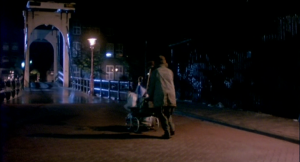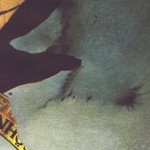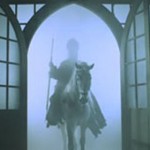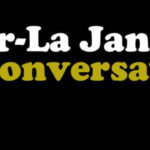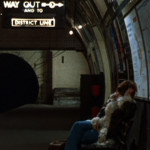The Psychotronic Tourist: “AMSTERDAMNED” (1988)

In what could be seen as the ultimate anti-tourism film, Dutch enfant terrible Dick Maas paints Amsterdam’s historic canals blood red as a scuba-diving serial killer roams the waters, slashing victims with a giant diving knife. 
The film has been oft-described as a Dutch giallo, and indeed the plot does bear shades of Dino Tavella’s THE EMBALMER (1965) – in which a skull-faced scuba-diving killer brings his victims to an underwater lair in Venice – not to mention the earlier German krimi film THE INN ON THE RIVER (1962) in which a killer known as ‘The Shark’ is stalking victims along the Thames with a spear gun*. But even aside from the compelling aesthetic of the labyrinthine canals, AMSTERDAMNED remains one of the best action thrillers an exploitation fan could buy levitra online us hope for, complete with gruesome murder setpieces and a white-knuckle speedboat chase (inspired by a similar chase in the 1971 film PUPPET ON A CHAIN).
Returning from Maas’ earlier international hit THE LIFT (1983) – as well as Maas’ disturbing video for Golden Earring that references it (which you can see HERE) – is 80s Dutch heartthrob Huub Stapel, playing the homicide detective on the case (with the craziest case of permanent 5 o’clock shadow EVER), alongside Dutch cutie Monique van de Ven, who – after breaking out in Paul Verhoeven’s TURKISH DELIGHT – tried to cross over to the North American market and only succeeded in landing a leading role in Brian Trenchard-Smith’s cult classic STUNT ROCK before returning to Holland (a score all the same!).
 Like most films, AMSTERDAMNED has some creative geography, and the film’s title is still a bone of contention (or a point of pride, conversely) for Utrecht residents, whose own canal system, with its low-lying sidewalk cafés, was a major star in the chase scenes. But despite this and other detours from topographical reality, with AMSTERDAMNED Maas crafts a love letter that both showcases the region’s most breathtaking architectural structures and exoticizes them in a way that any ‘psychotronic tourist’ can appreciate.
Like most films, AMSTERDAMNED has some creative geography, and the film’s title is still a bone of contention (or a point of pride, conversely) for Utrecht residents, whose own canal system, with its low-lying sidewalk cafés, was a major star in the chase scenes. But despite this and other detours from topographical reality, with AMSTERDAMNED Maas crafts a love letter that both showcases the region’s most breathtaking architectural structures and exoticizes them in a way that any ‘psychotronic tourist’ can appreciate.
I was joined on the tour by Dutch journalist Michael Minneboo and Schokkend Nieuws Filmmagazine Editor / Imagine Fantastic Film Festival programmer Barend de Voogd, the latter of whom spectacularly arranged for director Dick Maas (!) to accompany us for an afternoon boat ride revisiting some of the canal locations, 25 years after the fact. We were shocked when he nonchalantly announced that it was his birthday. “Why would you spend your birthday with a bunch of strangers?” I asked. He shrugged. “There’s nothing else to do on a birthday.”
[Please note: Unlike the BODY DOUBLE tour, some of these locations are on water and do not have exact addresses, but we’ll give you the closest intersections as well as a map (scroll down to the bottom for the map) and current photos so that you can easily find the places in person. We won’t stop at every place along the speedboat chase but we posted some highlights, and stay tuned for some video footage shot by Michael Minneboo on the journey, to be posted another day!]
*This article is dedicated to my frogman friend Sam McKinlay, the levitra without prescription ottawa king of underwater terror and my source for all-things-krimi. Special thanks to Barend de Voogd and Chris Oosterom at the Imagine Film Festival, whose generosity made this tour possible!
And of course a big thank you to Dick Maas, who took time out of prep on his newly-announced Lion-on-a-rampage film PREY to come out with us!
———
BEFORE WE GET STARTED, HERE’S THE FILM’S TRAILER TO GET YOU IN THE MOOD:
———
 THE VICTORIA HOTEL – Damrak 1-5, Amsterdam
THE VICTORIA HOTEL – Damrak 1-5, Amsterdam
The film’s opening credits appear over this classy hotel directly across from Amsterdam Central Station, on the corner of Prins Hendrikkade and the Damrak, which was the city’s main road at the time of the hotel’s opening in 1890. It was built by German architect J.F Henkenhaf, who had to buy and tear down some of the Damrak’s original houses, but was unable to afford some of the properties on Prins Hendrikkade (building numbers 45 and 47) and so the hotel had to be built around them, which is how it remains to this day (those two addresses house souvenir shops). The hotel became a hub for visiting celebrities, and past guests have included Mata Hari, Louis Armstrong, Glenda Jackson and Fats Domino. But most importantly, next door to the hotel is a FEBO, the ubiquitous Dutch fast food restaurant where you can get krokets – essentially gravy contained within a deep fried breadcrumb roll – which are the best food ever made, next to The Best Wurst and Count Chocula.
 MAGERE BRUG – Amstel River, Amsterdam
MAGERE BRUG – Amstel River, Amsterdam
As the killer bobs up and down in the water during the film’s opening POV sequence, one of the landmarks spotted is The Magere Brug – directly translated as “Skinny Bridge”- a double-leaf bascule bridge (a type of drawbridge) over the river Amstel in the city centre of Amsterdam, between Keizersgracht and Prinsengracht. It is so called because the original bridge (built in 1691) was very narrow, having been widened in 1871 and then renovated or rebuilt on average of every 50 years since. It is now limited to pedestrian and bike traffic, but still opens several times a day to allow for passing vessels. Urban legend has it the bridge is named after two wealthy sisters who lived on opposite sides of the Amstel and had the bridge built so that they could visit eachother. There are many bridges that look like this in Amsterdam (including the one where the first murder takes place), but this is the largest and most famous.
“RED LIGHT DISTRICT” – Groenburgwal / Groenburgwal 69, Amsterdam
This is in quotation marks because it is not the actual famed red light district, which remains too much of a tourist attraction to shut down for filming. Instead the opening scenes are shot along the small Groenburgwal canal in the old city center – where we meet the film’s first victim (at Groenburgwal 69, now a private residence) – and which is actually a more picturesque street. From the small white drawbridge you get a clear shot of the Zuiderkerk (South Church) tower at the end of the canal, designed by Hendrick de Keyser as an important contribution to what is known as the “Amsterdam Renaissance” of the 17th century – and also the subject of a famous painting by Claude Monet.
 FIRST MURDER – Intersection of Galgenstraat and Prinseneiland, Amsterdam
FIRST MURDER – Intersection of Galgenstraat and Prinseneiland, Amsterdam
After a run in with a sleazy cab driver who ejects her by the side of the road after she refuses to give him a freebie, the prostitute is left in the dark desolation of the area that in real life is known as Amsterdam’s ‘Western Isles’ – a series of small islands just to the north west of the Central Station. She is standing on the Prinseneiland – originally just called ‘the middle island’ – at the foot of a white drawbridge, a smaller version in the style of the Magere Brug. The island was long unpopulated and used for storage, until after WWII when it became popular among artists and musicians, as it remains to this day, with the former warehouses converted to apartments (a sign of the bohemian nature of the neighbourhood is the yellow submarine parked near the intersection of Bickersgracht and Realengracht).
MURDER STEPS – Intersection of Kleine Bickerstraat and Bickersgracht
The first murder scene is shot over two different canals on either side of the middle island, edited to look like one location. When the killer takes the victim down some rocky steps into the canal below, these steps are actually on the Bickersgracht, just on the southeast corner of the bridge.
 TOURBOAT TRAUMA – Intersection of Keizersgracht and Reguliersgracht, Amsterdam
TOURBOAT TRAUMA – Intersection of Keizersgracht and Reguliersgracht, Amsterdam
The ‘discovery’ of the prostitute’s body is one of the most sensational setpieces in the film: as one of the many lowrider glass-topped Dutch tourboats sails along the Keizersgracht, the driver is momentarily distracted by a seething mass of rowdy children and plows straight into the corpse, which is hanging from the bridge at Reguliersgracht. When her bloody body scrapes along the top of the boat, look out for Amsterdam Fantastic Film Festival founder Jan “Mr Horror” Doense as one of the terrified passengers!
SIDEWALK CAFÉ – spiegelgracht 31, Amsterdam
Huub Stapel drives past this sidewalk cafe on his way to work the day the first body is found. Normally this wouldn’t be worth mentioning, except that sitting at the cafe is famous Dutch writer Simon Carmiggelt, who was well-known as a columnist for underground paper Het Parool, which had originally started during WWII as an illegal resistance newspaper. His columns, referred to as ‘Kronkels’ (after the pen name he used) continued through the 1980s. Carmiggelt passed away before AMSTERDAMNED was released.
 DAM SQUARE MONUMENT – Dam Square, Amsterdam
DAM SQUARE MONUMENT – Dam Square, Amsterdam
Continuing on his way to work, Huub races past this square in the historical center of Amsterdam, just southwest of the red light district. A hub for governmental and commercial activity since at least the 13th century, it is most recognizable now as the site of the National Monument, erected in 1956 in honor of WWII fatalities, which is flanked on either side by the luxurious Hotel Krasnapolsky and the Royal Palace. There’s also a mini-carnival mounted on the grounds several times a year.
 BAKERY – Vismarkt 21, Utrecht
BAKERY – Vismarkt 21, Utrecht
After passing Dam Square, Huub jumps all the way to Utrecht for a stopover to beat up some punks who are holding up a small bakery, which establishes him as a no-bullshit Dirty Harry-esque cop. The street name, Vismarkt, means ‘Fish market’ which was its function going back to at least the 13th century, and the canal that runs alongside it was originally connected to the moat for a Roman fort built in 47 AD, the remains of which still lie under the current city – making Utrecht one of the oldest cities in the Netherlands.
 POLICE STATION EXTERIOR – University of Amsterdam, Nieuwe Achtergracht and Roetersstraat
POLICE STATION EXTERIOR – University of Amsterdam, Nieuwe Achtergracht and Roetersstraat
Barend and I went halfway across town looking for this building and didn’t realize it was practically in city centre and I’d walked past it at least 5 times. To be fair, while the building doubled as both the exterior of the Police Station, and its interior lobbies/hallways, it has since been extensively modified as part of a major University redevelopment project in which a new modern building operates as a bridge connecting those on either side of the Nieuwe Achtergracht. As you can see from the present photo, construction is still underway as of this writing.
 POLICE STATION OFFICE INTERIORS – Stopera, Amsterdam
POLICE STATION OFFICE INTERIORS – Stopera, Amsterdam
Although its exterior is not used, the interiors of the Police Station were shot at Amsterdam’s City Hall, located in the complex known as the “Stopera” – an awkward combination of the words “Stadhuis” (Dutch for “city hall”) and “Opera”, as the complex houses both of these institutions. It is one of the few genuinely hideous buildings in the city, which is ironic considering they spent 60 YEARS deciding on the design. When AMSTERDAMNED was filmed, the City Hall section of the complex wasn’t open yet, as it wasn’t completed until 1988; its construction had been significantly waylaid by squatters-rights protesters. In the 1970s there was a housing shortage that led to a proliferation of squatters holing up in the city’s dilapidated buildings, and when the city announced plans to demolish the buildings for extensive redevelopment, the forced evictions eventually resulted in full-scale rioting, complete with tear gas, arrests and massive property damage. When Huub and pals are meeting in the police cafeteria, the view out the window is of Waterlooplein 23 across the street.
 FACTORY – Northwest side of the IJ, no longer there.
FACTORY – Northwest side of the IJ, no longer there.
This is the factory where the two environmentalists are taking water samples. Because the factory is gone (part of larger development initiatives along the northern waterfront) its location on the map is approximate. Amsterdam’s waterfront, which separates City Centre from Amsterdam North is known as the IJ – pronounced ‘Eye’ – the latter of which is also the name of the stunningly modern new cinema complex recently erected on the north side of the IJ, where this year’s Imagine Film Festival took place.
 DINER – Carlton Hotel, Vijzelstraat 4, Amsterdam
DINER – Carlton Hotel, Vijzelstraat 4, Amsterdam
Huub Stapel has lunch with his old friend/diver cop as they discuss the murders at this diner, which is still a cafe on the main floor of the Carlton Hotel, right next to Amsterdam’s famous ‘floating’ Flower Market and around the corner from the one Amsterdam structural icon I’m amazed didn’t make it into AMSTERDAMNED – Tuschinski’s hundred-year old movie palace, which, if you’re in the area, you MUST see. It is one of the oldest and most beautiful cinemas in the world, and its décor – a mix of art nouveau, art deco and gothic – looks straight out of a Tim Burton movie.
“ZEEWOLF DIVING CLUB” – Watersportcentrum De Duikelaar – Noordzijde 41, Amsterdam
After getting a tip that the killer in question may be a hobby diver, Huub Stapel goes to the “Zeewolf Diving Club” to suss out potential deranged scubanauts and meets the lovely Monique Van De Ven, whose therapist has recommended the underwater activity as stress relief. The real location is the Watersportschool De Duikelaar along the north bank of the Sloterplas, a man-made lake built on the site of a former natural lake that had been drained in the 17th century. Both the exterior and the interior nautically-themed clubhouse bar were used. The clubhouse looks much the same today, although less of a hangout for rowdy seafarers than a community centre for children.
 GARBAGE BOAT BODY DISCOVERY – Binnengasthuis, Oudezijds Achterburgwal 235, Amsterdam
GARBAGE BOAT BODY DISCOVERY – Binnengasthuis, Oudezijds Achterburgwal 235, Amsterdam
The film’s third victim is a dishonest Salvation Army woman who is seen pocketing the charity funds just before being dragged into the canal by the killer. Her body is picked up by a garbage boat dragging the canal for refuse outside the Binnengasthuis (‘Inner Hospital’), which was a medieval cloister for nuns and then a notoriously understaffed and unkempt hospital for the poor, for soldiers and travellers (as well as plague victims) before being established as the main building of the University of Amsterdam in 1981. Today it is the entrance to a small university campus that also includes the university’s restaurant and the Oudemanhuispoort, the latter of which houses a few faculties as well as a famous book market that has been in operation since the 19th century.
RIJKSMUSEUM – Museumkwartier, Amsterdam
Amsterdam’s Rijksmuseum (“State Museum”) is the home of Rembrandt’s most revered painting “The Nightwatch” (pictured prominently in the film) and workplace of Monique Van de Ven’s character. It was closed in 2003 for a 375 million-euro makeover (with many of the most famous artworks moved temporarily to an annex building), and just reopened the day I arrived in Amsterdam, after being closed for an entire decade. While ‘The Nightwatch’ is still there (having survived not only the WWII occupation but also repeated acts of vandalism), sadly the dome-like 70s phone booth from the film is not.
 WINDMILL RESTAURANT – De Bernisse Molen, Molenstraat 13, Geervliet
WINDMILL RESTAURANT – De Bernisse Molen, Molenstraat 13, Geervliet
After accosting her at work, Huub takes Monique on a date to this restaurant inside an authentic windmill, built in 1851 on the foundation of a defense tower from the 14th century, which was originally attached to a city wall that is no longer there. The mill was in operation until 1947 and became a restaurant in 1984 (although it’s called The Bernisse Molen (Bernisse Mill), not “Chez Gaston” as its neon signage indicates in the film). HUGE thanks to Mr. Leo Middelkoop of the Windmill database (http://www.molendatabase.nl) for identifying this location after we spent hours looking at pictures of windmills to no avail! Dick Maas remembered it as being 20 minutes outside of Amsterdam, when in fact it’s south of Rotterdam, in the town of Geervliet. The windmill is still an operating restaurant today: http://www.bernissemolen.nl/
 DESERTED TOWER – Montelbaanstoren – Oude Waal-Oudeschans 2, Amsterdam
DESERTED TOWER – Montelbaanstoren – Oude Waal-Oudeschans 2, Amsterdam
While Huub is on his date, his neglected teeny-bopper daughter and her ‘psychic’ friend decide to start their own investigation, and wind up prowling the grounds of a deserted tower along the Oudeschans on the trail of the killer. The tower is a remnant of the city’s 16th century fortifications, as Amsterdam was a wealthy city at the time, often targeted by pillagers. The tower’s white spire and clock were later additions by architect Hendrick de Keyser (who also designed the Zuiderkerk, seen in the film’s ‘Red Light District’), and for a long time the tower was colloquially referred to as ‘Silly Jack’ because the clock always kept the wrong time. The tower was a favourite subject for many Dutch painters, including Rembrandt, who lived around the corner from it.
MONIQUE VAN DE VEN’S APARTMENT – Kalkmarkt 13, Nieuwmarkt en Lastage, Amsterdam
Hilariously, Huub’s new love interest has an apartment right across the canal from the Montelbaanstoren, which technically means he could have seen his daughter dangerously spelunking there at the same time, if he was any kind of detective!
 DINGHY DEATH – intersection of Keizersgracht and Brouwersgracht, Amsterdam
DINGHY DEATH – intersection of Keizersgracht and Brouwersgracht, Amsterdam
This is the film’s most iconic murder (used in the Shameless DVD box art), not only because of the misogynistic nature of the attack, but because the victim is Leontine Ruiters (credited onscreen as Leontien Ruyters), later to become famous as a TV weathergirl and the hostess of the Dutch version of WHEEL OF FORTUNE, as well as the wife of Nederpop singer Marco Borsato. If you look at the then-and-now photos, you’ll notice the houseboats flanking the victim on either side are still there!
 PSYCHIATRIST’S HOUSE – 77 Alberdingk Thijmlaan, Heemstede
PSYCHIATRIST’S HOUSE – 77 Alberdingk Thijmlaan, Heemstede
Monique van de Ven’s suspicious yuppie shrink treats his patients from home, in this case a tranquil canalside house way out of town in Heemstede, just south of the smaller city of Haarlem. If you take the train from Amsterdam Central Station to the Heemstede-Aerdenhout station on the outskirts of Haarlem, you’ll see the house right across the canal. The same people currently live in the house as did during filming, and originally declined the request for their house to be used, as they’d just moved in mere days before Maas’ locations scout came knocking. But a month later, the AMSTERDAMNED crew still hadn’t found a house they liked as much, and so returned with another offer that was accepted. During filming, the corner of the street was shut down to traffic, the house sheathed in a giant tarp, and a temporary boathouse was attached. While building it, some crew members fell into the canal and had to shower in the house, which the owner seemed to think was quite gauche. For close ups of the front door, they built an exact replica of the door, so that they could shoot those scenes in studio (the residents, understandably, refused to have the door removed temporarily as was requested). Although the owners seemed to cherish the experience as one for the memory books, please respect the private property if you visit.
TUNNEL – Oudegracht and Oudkerkhof, Utrecht
The police drive through this tunnel at night, scouring the canals for the killer. This particular tunnel, however is in Utrecht, along the thousand-year-old Oudegracht, or “Old Canal” where the water level is low enough that many of the cellars have been opened up into lowrider sidewalk cafes – which will come in handy later during the pivotal chase scene…
DRAWBRIDGE – Kattenburgerstraat and Dijksgracht, Amsterdam
After chasing a suspect on a motorbike they finally corner him on the Mariniersbrug, a drawbridge which opens as he is trying to cross it.
 DRUNKARD’S BOAT SINKS – Hogesluis and Sarphatikade, Amsterdam
DRUNKARD’S BOAT SINKS – Hogesluis and Sarphatikade, Amsterdam
The cops realize they have the wrong guy when the killer strikes again, this time targeting an old drunk on a dilapidated boat moored along the Amstel River just at the southern edge of the canal ring (the network of canals form a distinct ring-shape around the city, and outside of this ring is considered ‘the suburbs’). The killer cuts the boat loose and it drifts along the river near the Hogesluis, a Parisian-style ornamental bridge over the Amstel River built in 1662 (later rebuilt in 1883), before sinking to the bottom of the canal. The boat was actually sunk in Oostvoornsemeer (a lake in the Port of Rotterdam) and the wreck remains at the Europoort Dive centre 15 metres underwater as a leisure diving site. The morning after the crime when an aerial shot reveals the police on the scene, you can see from the current photo that the same houseboat is on the Sarphatikade side of the canal, only now painted blue.
AMSTEL SLUICE – Amstel River and Prinsengracht, Amsterdam
After the killer attacks one of their men underwater, the cops follow his surface bubbles and think they are chasing the killer into the dead end of the closed sluice gate, but when they drain the water out (it was not possible to actually drain the sluice, so a matte painting was used), he’s not there…
“AMSTEL MARINA” – Jachtwerf Bibo, Koenenkade 24, south of Amsterdam
This is the Marina where the epic speedboat chase – breathtakingly choreographed by stunt driver Dickey Beer – kicks off.
SPEEDBOAT CHASE 1 – Amstel River at Berlagebrug (Berlage Bridge), Amsterdam
The first casualties of the speedboat chase are these rowers, who are run over just below the Berlagebrug.
 SPEEDBOAT CHASE 2 – Keizergracht at Reguliersgraht, Amsterdam
SPEEDBOAT CHASE 2 – Keizergracht at Reguliersgraht, Amsterdam
The boats splash a group of leisurely pedal-boaters, including Dutch film critic Simon van Collem, who – like fellow cameo-maker Simon Carmiggelt – also died within a year of the film’s release. Ironically, van Collem died of a heart attack at the aforementioned Tuschinski’s Theatre, during the gala premiere of the James Bond film LICENCE TO KILL. Van Collem can also be seen for a split-second in the chaotic finale of AN AMERICAN WEREWOLF IN LONDON.
SPEEDBOAT CHASE 3 – Oudegracht and Ganzenmarkt, Utrecht
On the other side of the same tunnel where the police were searching earlier in the film, here the speedboat chase jumps to Utrecht, splashing a bunch of unsuspecting diners at a canalside cafe.
SPEEDBOAT CHASE 4 – Oudegracht aan de Werf and Jakobskerkhof, Utrecht
Here the speedboats jump right onto the sidewalk, crashing into diners eating at a canalside restaurant! In order to take advantage of the low-lying canalside patios for these shots, a full two days of filming were needed for what would amount to ten seconds of footage in the final film.
Barend de Voogd driving the slowest boat ever
SPEEDBOAT CHASE JUMP – Intersection of Keizersgracht and Leidsegracht, Amsterdam
Back in Amsterdam now, the speedboat does an amazing jump right over the Leidsegracht road bridge with the help of a ramp (which was built for the film). Among the amazed onlookers is a brass band in a passing boat, their conductor played by fellow Dutch filmmaker Bert Haanstra (the sequence is a nod to his 1958 film FANFARE, still one of the most popular films in Dutch cinema history).
 SPEEDBOAT EXPLOSION – Central Station, inlet between Stationsplein and Odebrug, Amsterdam
SPEEDBOAT EXPLOSION – Central Station, inlet between Stationsplein and Odebrug, Amsterdam
The killer’s speedboat crashes into a tug boat in this little inlet beside Amsterdam central station, and explodes. Behind the explosion you can see St. Nicholas’ Basilica and the 15th century Schreierstoren or “Weepers Tower”. But the killer sneaks away into a sewer tunnel (which was a set built for the film, as Amsterdam has no such sewer system)
THE KILLER’S HOUSE – Weteringstraat 33, Amsterdam
The final stop on our tour: the killer’s house! Although not backed up onto a canal as it appears in the film, this house is on a quiet street around the corner from the Rijksmuseum. And apparently the people who own the place rent it out as a vacation flat. Next time!
—————–
AMSTERDAMNED was recently reissued on Region 2 DVD by Shameless Screen Entertainment with multiple sub options and a “Making of” featurette.
View The Psychotronic Tourist: AMSTERDAMNED (1988) in a larger map

 May 6, 2013
May 6, 2013  No Comments
No Comments








